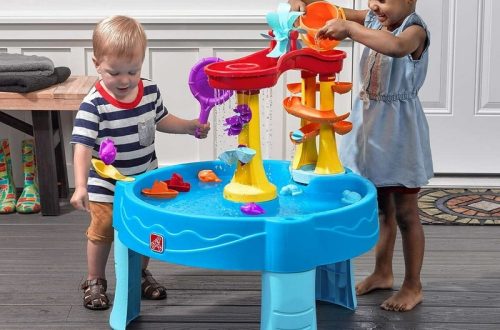Part 1: The Foundation of Your Game
1.1 Define Your Game’s Core Mechanics
Every great board game is built on a solid foundation of core mechanics. These are the fundamental actions players take to interact with the game. Whether it’s rolling dice, drawing cards, trading resources, or moving pieces around a board, these actions should be clear, engaging, and contribute directly to the overall game experience.
Simplicity is Key: While complex mechanics can be rewarding, starting with a simple core mechanic often leads to a more accessible and enjoyable game.
Balance and Interaction: Ensure that the core mechanics create opportunities for player interaction and strategic decision-making. A well-balanced game allows players to influence the outcome without feeling overpowered or helpless.
1.2 Create a Compelling Theme
A strong theme provides a framework for your game’s world and immerses players in the experience. It should be relevant to the gameplay and inspire the design of components, artwork, and rules.
Thematic Integration: Ensure that the theme is reflected in every aspect of the game. From the game board to the player pieces, everything should contribute to the overall atmosphere.
Player Immersion: A well-developed theme can transport players to another world, making the game more engaging and memorable.

Part 2: Building the Game World
2.1 Design an Engaging Game Board
The game board is the canvas upon which your game unfolds. It should be visually appealing, functional, and contribute to the overall gameplay experience.
A well-designed board is essential for facilitating an enjoyable gameplay experience. It should be clear and informative, presenting essential information to players without overwhelming them. This can be achieved through the use of intuitive graphics and symbols that are easy to understand at a glance. For instance, employing universally recognized icons can streamline learning the game rules and mechanics, thereby minimizing confusion. Additionally, consider the use of color coding or clear fonts to delineate different zones or game elements; this makes it easier for players to identify crucial aspects of the board quickly.
Moreover, the strategic opportunities presented by the layout of the board are fundamental to fostering engaging gameplay. A thoughtfully designed board should encourage players to make meaningful decisions, offering multiple paths to victory. For example, a layout that provides various resource management choices, pathways for player movement, or locations for strategic placement can stimulate critical thinking and planning.
This design can lead to inventive strategies, as players weigh their options and consider the potential outcomes of their decisions. When players are able to see that their choices can lead to different strategies and outcomes, it elevates their investment in the game. Ultimately, striking a balance between clear visuals and strategic opportunities not only enriches gameplay but also ensures that players feel challenged and engaged, resulting in a more memorable and satisfying gaming experience.
2.2 Develop Intriguing Components
Game components, such as cards, dice, and miniatures, can significantly enhance the player experience. They should be visually appealing and serve a clear purpose within the game.
Component Variety: Incorporate a variety of components to add depth and interest to the game. Different types of cards, unique dice mechanics, or detailed miniatures can create a more immersive experience.
Thematic Relevance: Ensure that components align with the game’s theme. For example, a fantasy game might feature custom-designed monster cards, while a historical game could use detailed player boards.

Part 3: Crafting Gameplay
3.1 Balance Challenge and Satisfaction
A well-balanced game provides a challenging yet rewarding experience for players of all skill levels. The difficulty should gradually increase as players progress, encouraging them to overcome obstacles and achieve victory.
Player agency is a fundamental aspect of designing an engaging board game. By providing players with meaningful choices that impact the outcome, you cultivate a sense of ownership and involvement in the game. When players feel that their decisions matter, they are more likely to invest emotionally in the gameplay experience. This can manifest in various ways, such as branching paths, strategic options for resource allocation, or unique character abilities that influence gameplay dynamics. Encouraging strategic thinking not only makes each player’s decision crucial but also fosters discussions and interactions among participants, enhancing social engagement.
In addition to player agency, incorporating variable player experiences is essential for maintaining long-term interest and excitement in your game. By designing mechanics that accommodate different playstyles and strategies, you create a dynamic environment where players can explore various tactical approaches and adjust their strategies based on their preferences or even on how well they know their opponents.
This can involve multiple paths to victory, customizable character traits, or even evolving game boards that change with each session. When players realize there are numerous ways to approach the game, it keeps the experience fresh and unpredictable, inviting them to return for repeated playthroughs. Ultimately, merging player agency with variable experiences not only enriches gameplay but also ensures that each session feels unique, prompting players to experiment and continually discover new strategies and outcomes, which enhances the lasting appeal of your board game.
3.2 Create Opportunities for Player Interaction
Social interaction is a key element of many board games. Incorporate opportunities for players to cooperate, compete, or negotiate with each other.
Direct Conflict: Create mechanisms for players to directly challenge or hinder opponents, adding excitement and tension to the game.
Cooperative Elements: Introduce cooperative challenges that require players to work together to achieve a common goal. This can foster teamwork and collaboration.

Part 4: Polishing Your Game
4.1 Test, Refine, and Iterate
Thorough playtesting is essential to identify and address any issues with the game. Gather feedback from a diverse group of players to ensure the game is enjoyable for a wide audience.
Iterative Design: Be prepared to make changes based on playtesting feedback. This iterative process is crucial for refining the game’s mechanics and balance.
Accessibility: Consider the needs of players with disabilities when designing the game. Ensure that the rules and components are easy to understand and use for everyone.
4.2 Create a Memorable Experience
A great board game leaves a lasting impression on players. Pay attention to the overall experience, from unboxing the game to the final moments of gameplay.
Thematic immersion is a key element in board game design, as it significantly enhances player engagement and enjoyment. To reinforce the game’s theme, it’s essential to ensure that every aspect— from the artwork to sound effects and physical components—works harmoniously together. Stunning visuals can transport players into the game world, while thematic sound effects can create an auditory atmosphere that deepens the immersive experience. For instance, a fantasy game might feature ethereal music and well-designed illustrations of magical landscapes, while a historical game might use authentic imagery and sounds that evoke a specific time period.
Additionally, incorporating narrative elements adds another layer of depth, creating a sense of progression and investment in the game world. Players love stories they can connect with, and weaving narratives into gameplay can make each session feel like an unfolding adventure. Whether it’s through character backstories, quest objectives, or evolving scenarios, storytelling can significantly elevate players’ emotional investment.
By diligently following these guidelines and remaining open to feedback during playtesting, you can continually refine your design. This iterative process enables you to create a compelling board game that not only captivates players but also offers endless entertainment. When done effectively, your game will not only be fun to play but will also foster a lasting connection with players, ensuring that they return time and again to experience the adventures you’ve crafted.



